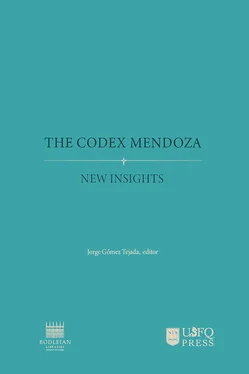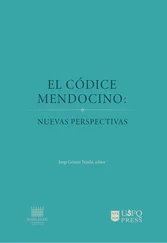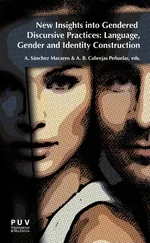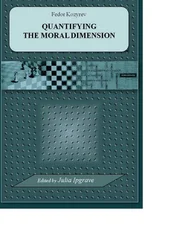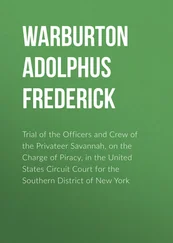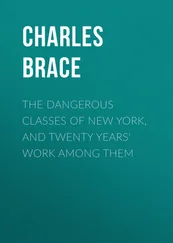The disturbances in the collation structure (e.g. the apparent replacement of the “title page” at folio 2 and the cancellations of leaves at the ends of Quire VI after the end of Section 2 at folio 55 and Quire VIII after the end of Section 3 at folio 71) can all be explained as integral to the making of the book and do not necessarily represent later accidents or losses. However, another clue about the early state of the manuscript may lie in the rough creases which are still visible especially in the first two sections but perhaps throughout the manuscript (up to folio 71); these indicate that, at some point in its history, the leaves of the Codex Mendoza had been roughly folded over twice, perhaps first vertically and then horizontally, into a quarter of its size. The similar character and locations of the creases seem to indicate that the complete manuscript was thus folded at once or that at least a few quires were simultaneously folded. Such folding could only have been possible if the manuscript had been either disbound or, at most, covered only with a single layer of limp parchment.
Examination of the creases under a magnifying glass indicates that they were formed after painting and writing: there are no signs of the disturbances in paint or ink-flow which would have been inevitable if a brush or pen were applied to creases already present in the blank paper. Similarly, the creases do not seem to appear in the front endleaves (pastedown and folios i-ii): these show vertical pleats which do not match those of the main text-block and their faint hints of horizontal indentations look like sympathetic settling against the text-block rather than the direct effects of folding. The early flyleaf at the end (folio 72) shows even less indications of creasing, except again perhaps very slight “sympathy” marks. These observations indicate that the text block had been folded before these endleaves were in place.
The evidence of the folds may be considered alongside the observation that the outside pages of the Codex Mendoza’s text block (folios lr and 71v) are browner than the inside pages of the manuscript; such discoloration is most likely explained through the absence of a cover or any other endleaves for a considerable period of time. This could mean that the manuscript did not even have a limp parchment cover. Therefore, in conclusion, it would seem that the Codex Mendoza had survived disbound for some period of its early history and during that time was roughly folded over twice into a small package—perhaps during a pirate raid.
Second stage France, between 1553 (after 1568?) and 1587
While the manuscript was in the hands of André Thevet between 1553 and 1587, it was either bound for the first time or rebound with new endleaves of probably French paper at both ends (upper pastedown, folios i-ii, 72). The parallels between the endleaves’ main watermark (Pattern G) and French watermarks of the 1570s together with the apparent lateness of the Thevet signature on what is now the upper pastedown may indicate that he had it bound later rather than earlier in his period of ownership, maybe only after 1568-9 when he assumed the title Cosmographe du roi. The date 1571, written in an inscription in mirror writing on the last page of the Codex Mendoza (folio 71v) may also be relevant, though the rest of it is too heavily crossed out to be legible. This binding must have dated from before the passage of the manuscript to England in 1587, since the inscription bearing that date is written on folio ii verso. The first system of “7”-shaped quire signatures most likely dates from the time of this binding.
Third stage (England, seventeenth century, between 1655 and 1665)
The present binding of parchment over pasteboards evidently constitutes a second (or third) binding, made in England in the seventeenth century as the watermarks of the lower endleaves indicate. It incorporates the separate English manuscript on monetary tables which constitutes Part 2 (folios 73-84). No author’s name is attached to the tables, but an attribution to Sir Thomas Smith (1513-1577) is assumed (and disputed) in the attached note at folio 83r by the Oxford mathematician John Greaves (1602-1652). It also appears in early catalogue-entries (see below). The tables are certainly on the same subject and of the same character as Sir Thomas Smith’s “tables of money,” published in an appendix to his Life by John Strype (1820, 263–73), but they are not identical. Furthermore, these tables are more elaborate and contain classical quotations which do not appear in Strype’s printed version. The watermarks and script of Part 2 suggest that it might be early seventeenth-century, somewhat later than Sir Thomas Smith’s own time.
As compared with the order of pictures reproduced in Purchas’s edition of 1625, the disturbed order of leaves in Quire VI of the Codex Mendoza may indicate that the rebinding took place after Purchas’s study of the manuscript. The second series of quire signatures and the foliation sequence almost certainly belong to this period of rebinding, as is probably the case of also most or all of the repairing guards of thick paper (stubs [a]-[d], etc.).
The volume itself seems to contain no direct evidence to allow closer dating of the present binding; dating from the watermarks of the lower endleaves is inconclusive. The possibilities would seem to be that either: (a) the binding was made between 1625 and 1654, most likely for John Selden (d. November 30, 1654) or, since his date of acquisition is uncertain, possibly for the previous owner or (b) the manuscript was bound after Selden’s death, perhaps soon after or maybe even before its arrival at the Bodleian between 1655 and 1659. Many of Selden’s printed books and manuscripts were rebound around this time; however, such bindings are usually recognizable as modest bindings covered in brown (perhaps calf) leather, with a simple fillet decoration (véase B. C. Barker-Benfield 1997, 31–34). The parchment binding, though modest and without decoration, does not seem entirely consistent with these.
The evidence of the seventeenth-century lists of Selden’s books would appear to confirm that the consolidation of Parts I and II took place after his death. A handwritten catalogue of his printed books and manuscripts (now MS. Selden Supra 111) was prepared soon after his death and before the arrival of the collection to Bodley, perhaps in 1655 while his collection was still housed at his London residence, Carmelite House (home of Elizabeth, Countess of Kent). The Codex Mendoza is listed in the section for books “In the Furthermost Roome but one Westwards:” (folios 121v-128r), in that room’s final bookpress headed “F.” Section “F” contains 88 numbered items, of which no. 31-88 appear under the subheading “Libri Arab:”. Most of F’s books are indeed oriental (if not Arabic).5 The Codex Mendoza appears at no. 51 (folio 127v): “Historia Mexicana Hispanica cum Figuris fol’. Ms’”. This corresponds almost exactly with the seventeenth-century inscriptions on folio iir of the Codex Mendoza, “MS. fo” and “Historia Mexicana, Hispanice. Cum figuris, quasi hieroglyphicis.”
This catalogue entry makes no mention of the monetary tables of Part 2, and indeed the heading at the start of “F” (folio 126v) reads, “Bookes unbound.” It seems likely that this heading may apply to all 88 books listed below. The word “Unbound,” if genuinely applicable to Codex Mendoza, nevertheless should have included at least the paper flyleaves of the sixteenth-century French binding, since they are still present today and may be stretched to cover at least a limp binding.
Some leaves earlier, the catalogue listed manuscripts “In the roome at the long end of the Librarie” (folio 103r ff.). At Shelf “C” presumably of that room, under the heading “English Manuscripts:” (folio 109r), Item 6 comprised “English & Roman Standards Compared, fo: M:S:’ ”. This title seems to be an appropriate description for Part 2 (the heading of the first table at folio 73v starts, “The first Romane Standerd of Silver…”) and the identification is confirmed by the appearance of the number “6”, boldly written in ink at the top center of folio 73r.6
Читать дальше
